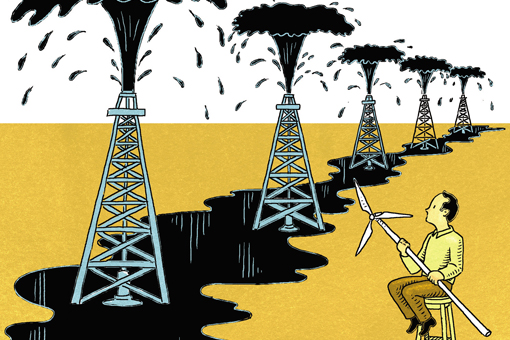While many have suggested that renewable energy can be a viable alternative for countries dependent on Venezuela’s PetroCaribe, it cannot address the region’s short-term energy needs. While there could be potential long-term savings, the short-term costs of investing in renewables, the declining cost of non-renewables, and the need to overhaul existing energy infrastructure are formidable obstacles.
Although PetroCaribe member nations—Antigua, Bahamas, Belize, Cuba, Dominica, Dominican Republic, Grenada, Guyana, Haiti, Jamaica, Nicaragua, St. Lucia, St. Kitts and Nevis, St. Vincent and the Grenadines, and Suriname-—are, for the most part, blessed with solar, wind, geothermal, and hydro resources, most are caught in a vicious cycle of high consumer and national debt and a high-risk lending profile that makes it nearly impossible to secure the necessary private financing. To really adopt renewable energy, countries would have to redesign their national energy sectors, a costly proposition at a time when there is little appetite among banks to take on such risks. There are additional hurdles to actualizing their resource potential, such as the absence of a legislative framework for renewable energy investment; existing contractual obligations for the use of fossil fuel resources; and the likely emergence of an alternative fuel source in liquefied natural gas (LNG).
All of these argue against renewable energy as an answer to their addiction to cheap oil from Venezuela. To meet their base-load (minimum) energy demand and maintain a dual-track system that allows for the integration of renewables with existing current fossil fuel facilities, PetroCaribe nations would require major infrastructure investments from the government and private sector. One is hard-pressed to see where the money would come from for such investment. Even in cases where a utility is owned and operated by the private sector, the need to maintain current levels of service while embracing new technologies means taking on new debt, and this is a daunting challenge in countries where consumption is declining.
And then there is the larger issue of whether renewables can even address the base-load needs of a region with a high incidence of drought and hurricanes.
To complicate matters, PetroCaribe members, beset with unstable and highly leveraged economies, represent a risky bet for investors and lenders. Many commercial banks and insurance companies do not even have renewable energy risk profiles in their portfolios; as a result, most of the PetroCaribe countries are largely dependent on the development community to drive changes in energy infrastructure.
A prime example of how the debt-investment trap serves as an obstacle to the necessary infrastructure investment is the recent discussion about geothermal energy in the Caribbean. Dominica, St. Kitts and Nevis, St. Vincent and the Grenadines, and St. Lucia all have sites deemed viable for geothermal exploration. Unfortunately, the cost of investment associated with exploiting this resource may well outweigh the anticipated decrease in the price of petroleum and natural gas. As a result, until now, the capital investment necessary to address high exploration and operational costs of geothermal development has not been forthcoming.
For many energy producers who are moving toward incorporating renewables into the energy mix, the transition will be determined more by political pressure from within and outside of the market where they operate, rather than by the prospect of cost savings. Any impetus for increasing the renewable sector thus depends on a legislative mandate.
LNG is currently presented as a better solution for regional energy needs, with the potential for U.S. exports of gas and its availability from regional markets in Trinidad and Tobago and Mexico. While it’s not clear how highly indebted countries can afford the costs, the prospect of LNG has crowded out realistic discussions about the policy reforms required to make renewables a viable alternative.
Despite the abundance of renewable natural resources, converting them to viable energy resources is also threatened by regional conflicts over land and resource management. For example, in many countries, the locations best suited for solar, wind, geothermal, and hydro projects are far from population centers—a factor that further drives up the cost of deployment. Equally daunting is that land nearer to population centers is often privately owned, and owners expect to be well-compensated. Finally, the resistance of Indigenous communities in Central America to major hydro developments on their ancestral lands is an ominous indicator of future disputes over other renewable resources.
Often overlooked is the fact that many PetroCaribe members have existing long-term contracts with utility providers that do not consider, much less mention, renewable energy as a potential source. Thus, there is little incentive to tackle the legal and contractual issues involved in re-negotiating such contracts—even though many have been considered bad deals for consumers. Above all, new entrants to the market would likely be leery of investing in societies where contract sanctity is not respected.
One possible way of overcoming the hurdles cited here is the provision of concrete U.S. support for energy diversification in the region, through the development of creative vehicles such as the Overseas Private Investment Corporation (OPIC) and the Export-Import Bank of the United States (EXIM), or through technical assistance to help countries assess their options. Until those guarantees are provided, a significant shift in the Caribbean to renewable energy will remain a laudable but unrealistic dream.





